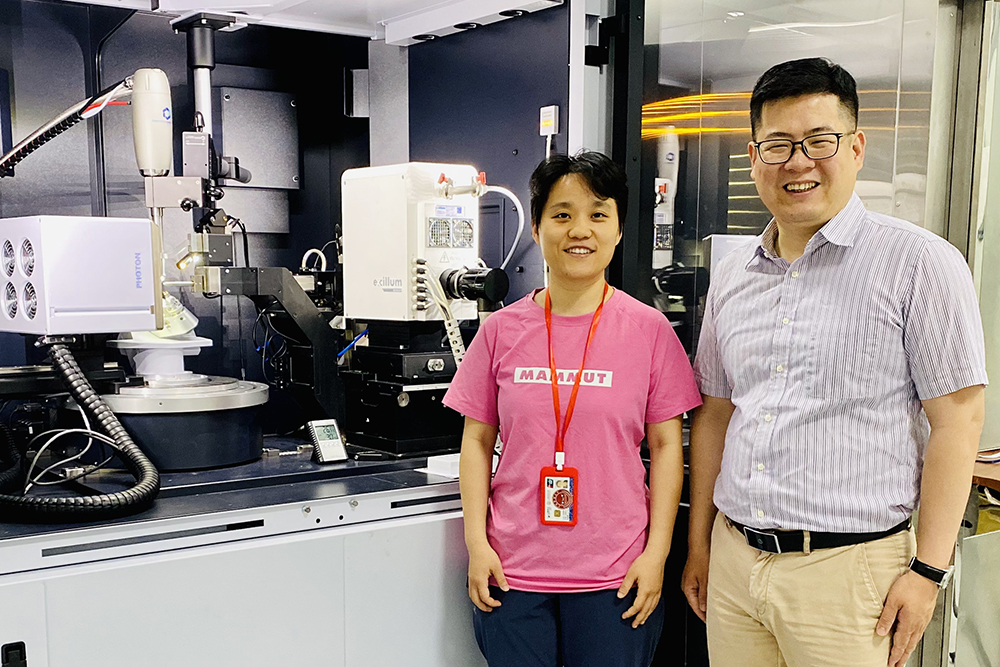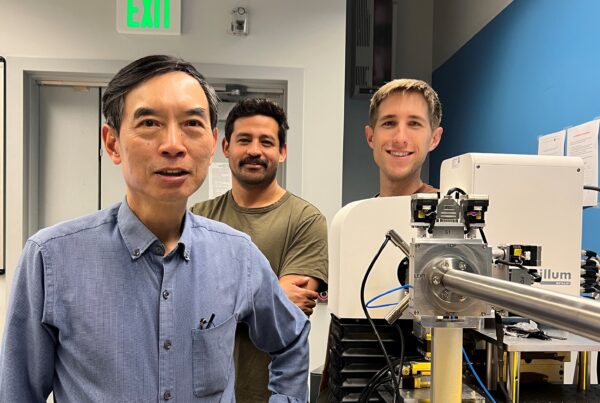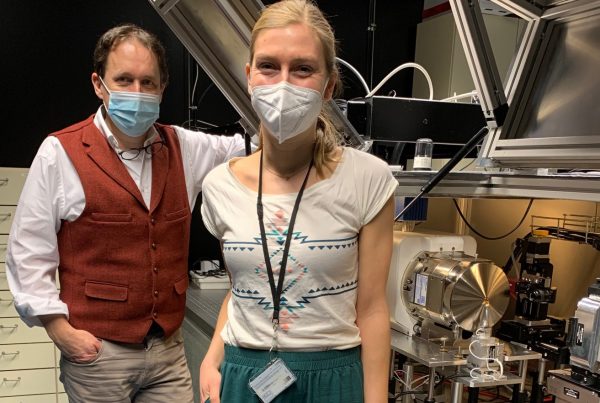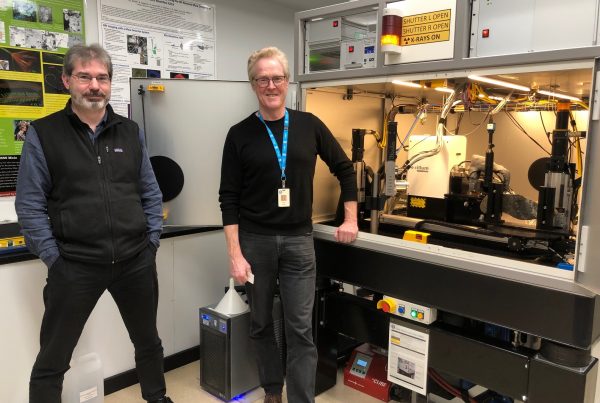Accelerating research of single-crystal structures
Established in 2015, the XRD lab at ShanghaiTech University is one of the best-equipped in China. Its most recent addition, a new Bruker D8 Venture diffractometer with an Excillum MetalJet D2+, makes it possible to push the limits of small-molecule crystallography with highest possible X-ray brightness, throughput and data resolution available in a laboratory environment.
Interviewees
Yue-Biao Zhang, Assistant Professor, PI
Na Yu, Senior XRD Engineer
Institute
ShanghaiTech University, China
Method
Single-crystal diffraction
Application
Small-molecule chemical crystallography (MOF, COF)
X-ray source
MetalJet D2+, as part of D8 Venture diffractometer (Bruker AXS)
…with the old source you had to collect one full data set overnight… Now, with the MetalJet, it took less than an hour even for an extremely small crystal.
Na Yu, Senior XRD Engineer
Just six years ago, Professor Yue-Biao Zhang arrived at the newly founded ShanghaiTech lab with a dream and a mission. “My dream is that porous materials can change the world”, he says. “And our idea is to create high-porosity, high-capacity materials that are customizable so you can capture exactly what you want from a mixed-gas material. You could capture the CO2 but not the water. Or in the desert, you could capture water from the air. If we could create these porous materials on-demand, that would really change the world.”
It’s a dream that begins with fundamental science. To make it possible, his mission is to create one of the world’s leading research laboratories in the study of the single-crystal structure of metal-organic frameworks (MOF) and covalent-organic frameworks (COF). Until recently, however, many of these samples were nearly impossible to examine with a conventional molybdenum and copper sealed microfocus source.
Hard data from unstable structures
“The crystals we’re investigating are highly porous and very small, often around 20 microns,” says Na Yu, the laboratory’s leading XRD engineer. “They’re also highly unstable, so if you try to measure their structures in a traditional diffractometer they just change over time. We also need a detector with a wide dynamic range, which allows us to measure strong and weak reflections on a single frame, significantly reducing measurement times.”
Thanks to the high brightness of the MetalJet D2+, together with the large area detector PHOTON III M28 of the Bruker Venture D8, over 30 students, including undergraduates, are now capable to perform these measurements around the clock by themselves in our laboratory. “We’ve now repeatedly determined challenging COF crystals,” Yue-Biao explains, “which was something we needed the synchrotron to do before. These crystals aren’t just small, they’re also very porous and very dynamic because they’re only made of organic elements. So there’s a lack of reversibility in the crystallization, and it’s very difficult to get large crystals.”
Even the nearby synchrotron, located just one mile from the university’s lab, was unable to meet all of the research team’s challenging demands. “If you activate the crystal and get rid of the gas, then the crystal can capture water from the atmosphere. It’s very hard to do in the synchrotron, and even in the lab this is a very careful process.”
It’s very, very important, both for the students and the research environment, to provide access to these advanced and specialized instruments.
Professor Yue-Biao Zhang
Accelerating workflows

Professor Yue-Biao Zhang and Senior XRD Engineer Na Yu in front of the Excillum MetalJet D2+ and Bruker D8 Venture diffractometer.
The lab’s primary research is application-driven, with a focus on gas storage applications such as methane and carbon capture. The hope is that a better understanding of the gas absorption site in single crystals, using argon as a probe to achieve atomic resolution, will contribute to the development of breakthrough materials in the fight against climate change.
The MetalJet source has considerably accelerated the lab’s research workflows within single-crystal diffraction, largely due to the source’s brightness. “The source is very, very strong,” says Na Yu. “The MOF, for example, has huge cages and with the old source you had to collect one full data set overnight, and the data resolution was just too poor. Now, with the MetalJet, it took less than an hour even for an extremely small crystal. The other day it took only twelve minutes.”
“We were very productive before,” adds Yue-Biao, “but we were too limited in our ability to examine the crystal structure. Now with access to high brightness home lab system our productivity is really rising.”
Experimentation from the ground up
At the same time, Yue-Biao is careful to mention that the true value of the new diffractometer extends far beyond research results. The pursuit to solve fundamental challenges in gas storage, after all, depends on contributing to a new generation of capable researchers. “Now all my students can do experiments to study the material properties and relationships by themselves” he says. “It’s very, very important, both for the students and the research environment, to provide access to these advanced and specialized instruments.”
This is something of a core philosophy for the entire lab, where as many as six hundred accumulated users have been authorized to use the five diffractometers by themselves. The machines are currently in operation eighty to ninety percent of the time, Na Yu estimates.
A culture of advanced exploration
The next step in the team’s research is to take full advantage of the dual-port capabilities of the MetalJet source. Currently, the second port is being tailored to further special research in controlled environments. “We’re customizing the diffractometer by ourselves,” explains Yue-Biao. “We can have electron field and magnetic field environments. We can experiment with different gases and different temperatures. These types of customized, non-ambient environments will give us a lot of new capabilities,” something the team aims to achieve within the coming year.
Ultimately, all of these capabilities will be used to foster the university’s unique culture of highly focused, fast-paced research and independent inquiry. “We are the new university and our ambition is to be the best in the world,” Yue-Biao concludes. “We’re small, but we can be very advanced and specialized in the kinds of work that nobody else is doing. We want to be independent and unique. And for us this means creating a culture with global standards where producing good scientists is more important than producing good papers. That’s our ambition.”



